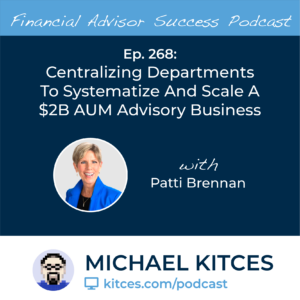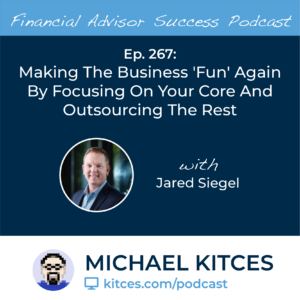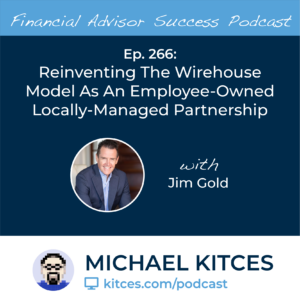 Welcome back to the 268th episode of the Financial Advisor Success Podcast!
Welcome back to the 268th episode of the Financial Advisor Success Podcast!
My guest on today's podcast is Patti Brennan. Patti is the CEO of Key Financial, an independent RIA based in the Greater Philadelphia area that oversees more than $2 billion in assets under management for nearly 800 client households.
What's unique about Patti, though, is how she has scaled her firm by centralizing her departments into a unique team structure, and systematizing processes amongst her client service team – not lead financial advisors – to create a high-touch experience for her clients.
In this episode, we talk in depth about how Patti adopts the “Starbucks” model where her advisors create tailor-made plans for each client by utilizing customizable templates, how Patti has designed a concierge-style client services department that she refers to as ‘key’ client services (a play on the name of her firm, and because she wants her clients to feel like they are key), and how Patti has, in the vision of KFC’s Colonel Sanders, leveraged her personal image and reputation as a symbol of her brand and marketing, even if she is not the forerunner of each client’s relationship with the firm anymore.
We also talk about how The 4 Disciplines of Execution by Sean Covey motivated Patti to form systems to get past just visualizing her business goals and move toward actualizing them, how Patti was inspired to increase her firm’s yearly goal after hearing an advisor describe bringing in $50 million in AUM in one year when she wasn’t growing at even half that rate, and how she focuses on optimizing her team’s individual talents to create a well-oiled organization.
And be certain to listen to the end, where Patti shares how she realized that to truly scale her business, she needed to let go of fear and learn to trust her team to implement her plans and vision, how Patti feels newer advisors would benefit most from working at a firm that is growing and has potential to keep growing, and why it is important as a leader to show vulnerability, admit mistakes, and master the art of apology.
So whether you’re interested in learning about how Patti organizes the departments in her firm to create an efficient workflow, why Patti places importance on cultivating deep, long-lasting relationships with both her employees and her clients, and how Patti stays inspired to continue setting and achieving goals, then we hope you enjoy this episode of the Financial Advisor Success podcast, with Patti Brennan.

 Welcome back to the 267th episode of the Financial Advisor Success Podcast!
Welcome back to the 267th episode of the Financial Advisor Success Podcast! Welcome back to the 266th episode of the Financial Advisor Success Podcast!
Welcome back to the 266th episode of the Financial Advisor Success Podcast!
